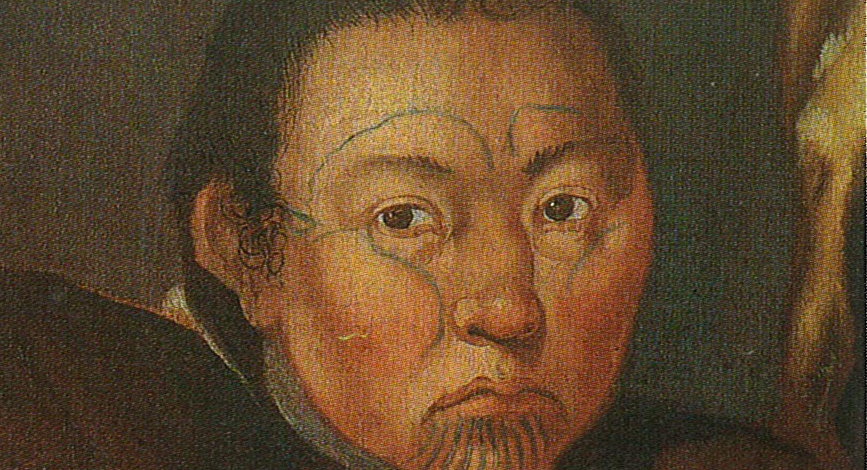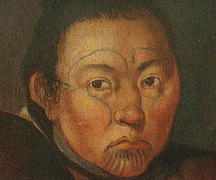Kakiuineq
Inuit tattoos

Women could be tattooed on the face, legs, arms, and back of their hands. Facial tattoos were usually lines or bands running from the lower lip down the chin. Men’s simpler tattoos were either on the face or arms, and symbolised a successful hunt and the souls of large whales they had killed.
The female mummies of Qilakitsoq had lines tattooed on their foreheads. One had lines tattooed from her eyes to her ears, and four had tattoos on their cheeks. Three had lines tattooed on the chin. A common belief among men and women alike was that tattoos gave skill in housework and luck in the hunt, and possibly social status locally. In Alaska there is a sandstone whale-oil lamp the bottom of which is a facial mask tattooed on the chin, cheeks, temples and forehead. The lamp is dated to c. 450 CE. The Dorset and Thule cultures used the same artistic tradition, which is also seen in the mummies of Qilakitsoq (1475).
Not long after the colonisation of Greenland the tradition disappeared in west Greenland, presumably because the missionaries considered tattoos to be incompatible with Christian beliefs. In east Greenland, on the other hand, tattoos existed much longer, but we know little of their meaning. But that women here saw them as important is clearly revealed by the words of Hans Egede: “Of the one whose face is not thus embroidered they say the head will end as a pot for whale oil to be placed beneath the lamp when they enter heaven or the land of souls.”
